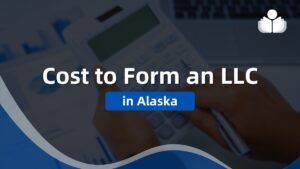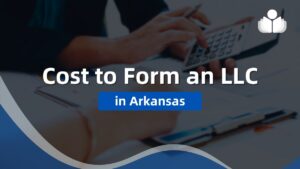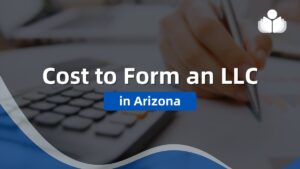Maximizing Potential: All About Training and Development
- Copyright Carter McNamara, MBA PhD, Authenticity Consulting. Much of the information in this topic is adapted from the books Field Guide to Leadership and Supervision in Business and
Field Guide to Leadership and Supervision for Nonprofit Staff.
Training and development — or “learning and development training” as many refer to it now — is one of the most important aspects of our lives and our work. In our culture, we highly value learning. Yet, despite our having attended many years of schooling, many of us have no idea how to design an approach to training and development. This topic in the Library provides an extensive range of information about training and development, including depicting how the many aspects of training and development relate to each other. Also, this topic explains how training and development can be used, informally or formally, to meet the nature and needs of the learner.
Sections of This Topic Include
Introduction to Training and Development
- What is Learning? Training? Development?
- Reasons and Benefits Regarding T&D
- How Adults Learn – Principles and Theories
- Roles of Management and Learners in T&D
Different Types of T&D Designs and Activities
Preparation for Developing T&D Programs
- Systematic Designs of T&D
- Guidelines to Design T&D Program
- Examples of T&D Programs in the Workplace
- Suggestions to Enrich T&D Activities
Design Your T&D Program
- Assessment: What Do You Need to Learn?
- Design: How Do You Want to Learn It?
- Development: What Resources Do You Need?
- Implementation: Conduct the Training
- Evaluation: Were Desired Results Achieved?
Business of T&D
Resources for Teachers and Trainers
Learn More in the Library’s Blogs Related to Training and Development
In addition to the articles on this current page, also see the following blogs that have posts related to Training Services and Development. Scan down the blog’s page to see various posts. Also see the section “Recent Blog Posts” in the sidebar of the blog or click on “next” near the bottom of a post in the blog. The blog also links to numerous free related resources.
- Library’s Career Management Blog
- Library’s Human Resources Blog
- Library’s Leadership Blog
- Library’s Supervision Blog
- Library’s Training and Development Blog
WHAT IS TRAINING AND DEVELOPMENT? WHY IS IT SO IMPORTANT?
What is Learning? Training? Development?
It’s amazing how so many of us go through so many years of schooling, but have such little understanding of T&D. Before reading about the many aspects of T&D in this topic in the Library, it’s best to start with a basic understanding of T&D is and how to best benefit from it.
Learning
Traditionally, learning is viewed as new knowledge, skills and abilities (KSA). Knowledge is gleaned by organizing information. Typically, information evolves to knowledge by the learner’s gaining context, perspective and scope about the information. Skills are applying knowledge in an effective and efficient manner to get something done. One notices skills in an employee by their behaviors. Abilities result from applying the skills to the extent that the applications become natural or intuitive to do. Some professionals view learning as enhancing one’s capacity to perform.
It’s important to note that learning is more than collecting information — more than collecting unreferenced books on a shelf. Ideally, the skills are applied to the most appropriate tasks and practices in the organization, thereby producing performance — results needed by the organization. Here’s another perspective.
Training
This term is often interpreted as the activity when an expert and learner work together to effectively transfer useful information from the expert to the learner (to enhance a learner’s knowledge, skills and abilities) so the learner can better perform a current task or job. A trainer might use a variety of methods to enhance a learner’s learning, including other- or self-directed, and formal or informal. Here’s another perspective.
Development
This term is often viewed as a broad, ongoing multi-faceted set of activities (training activities among them) to bring someone or an organization up to another threshold of performance. This development often includes a wide variety of methods, e.g., orienting about a role, training in a wide variety of areas,
ongoing training on the job, coaching, mentoring and forms of self-development. Some view development as a life-long goal and experience. Here’s another perspective.
Here are more definitions of terms in T&D.
Employment Training and Development: Reasons and Benefits
Reasons and Benefits Regarding T&D
We often think that the biggest benefit of learning is that we get a diploma or credential. As we get wiser, we realize there are so many more benefits than that. Knowing the benefits will help motivate you to design your own training plans and programs, and to motivate others to participate as well. Perhaps one of the biggest benefits is the appreciation that you can be learning all the time, even if you are not in a formal training program.
Employment Training and Development: Reasons and Benefits
How Adults Learn – Principles and Theories
Principles of Adult Learning
If you will be doing training and development with yourself (and almost every adult will be at some time in their lives) or with others, you should know the differences between training children and teens versus training adults. Adults have very different natures and needs in training.
Principles of — and Myths About — Adult Learning
Theories of Learning
When designing trainings, it helps to consider the influences that might be causing the learning to occur. That’s where theories of learning can be useful. A theory is a set of highly integrated ideas meant to explain how something works. Thus, a theory of learning is meant to explain how a person or group attains new knowledge, skills and abilities.
- Overview of Learning Theories
- Theories of Learning and Development
- Learning Theories
- Five Educational Learning Theories
- Six Learning Theories for Mobile Learning
Learning Styles
Research suggests that each person has a style of learning that best suits their nature. Educators and parents are encouraged to learn the style of their students and children and to adapt their educational activities to the nature of the learner.
- Overview of Learning Styles
- Your Guide to Understanding and Adapting To Different Learning Styles
- The Learning Styles Controversy – Arguments For and Against
Roles of Managers and Learners in T&D
A person or group will not learn unless they want to learn, regardless of how well the training was planned and how well the trainers do their jobs.
Role of Learners in Training and Development
Although the learning is primarily up to the learners to accomplish, the role of management is critical in the support and continuation of learning. That includes executives, managers and supervisors.
Role of Management in Learning and Development
In larger organizations with sufficient resources to operate a carefully designed and managed T&D program, it is useful to have a Chief Learning Officer.
Role of Chief Learning Officers
Different Types of T&D Designs and Activities
Different Types of Designs
There are different, major forms of designs of training and development activities. We’re most familiar with formal and other-directed forms of learning and development that include the strong attention to the systematic structure and evaluation of the learning and development, especially as used in schooling. That is somewhat ironic because the most common forms are informal and self-directed — they occur without strong attention to a systematic design and evaluation and without many experts guiding us through those experiences.
Ways to Look at Training and Development Processes: Informal/Formal and Self-Directed/Other-Directed
Numerous Types of Activities
There are many approaches to learning and development and many types of activities that can be undertaken to learn. An awareness of these other types will broaden your possibilities for intentional learning and for designing training for yourself and others.
Numerous Ideas for Learning Activities
Recent Movements in Organizational T&D
The field (or many would argue, the profession) of training and development has undergone dramatic improvements, especially with the inclusion of computer-and Web-based technologies. We’re also expanding the concept of learning beyond the learning of individuals — we’re thinking that groups and organizations can learn, too.
(Although the topics of the learning organization and knowledge management are fairly recent and still popular, many people would disagree that they’re actually learning and development programs — those people might assert that they’re actually forms of organizational performance management. However, the two topics still seem to be so broad and changing, that they’re referred to here as movements.)
PREPARATION FOR DEVELOPING T&D PROGRAMS
Systematic Designs of T&D
Instructional system design (ISD) is the activities to ensure that the design of training is very successful in achieving the goals of the training. One of the most common ISD models is ADDIE, which is an acronym for assessment, design, development, implementation and evaluation — you can discern from the acronym that ADDIES is a systematic design of training.
Formal Training Processes — Instructional Systems Design (ISD) and ADDIE
Guidelines to Design T&D Programs
Formal approaches to learning and development often have the highest likelihood of transfer of training. A formal approach to learning and development usually follows a systematic and consistent framework. Systematic means that the framework is designed to guide learners to achieve an overall set of goals — goals to address a need or situation, then associates objectives and activities to achieve those overall goals, and evaluates the activities and results to be sure the goals were achieved.
Guidelines to Design T&D Programs
Examples of T&D Programs in the Workplace
Before this Library topic goes on to explaining how to design and develop training programs, it’s useful to get a quick impression of various types of training programs. A training program is an intentionally designed, (hopefully) highly integrated set of activities that are aligned to accomplish a certain set of results among learners. Many of us might not be used to thinking of the following as programs in the workplace, but they are.
- Overviews of Various Formal Training Processes
- Orienting New Employees (New Hires, On-Boarding)
- Corporate Universities
It might help to broaden your understanding of how learning and development is applied in life and organizations by considering various forms of development. Development is often referred to as the activities to raise the performance of a person, team, process or organization to another level. Development include a wide variety of forms of learning and development. The following links are to a wide variety of forms of development in people and organizations.
- Board Development
- Employee Orientation
- Leadership Development
- Management Development
- Supervisoral Development
- Team Development
- Personal Development
- Sales Training
- Training Solutions for the “Dumbest Management Concepts of All Time”
Suggestions to Enrich T&D Activities
Now we’ll tie the many guidelines together into a set of suggestions that will be useful, especially when undergoing or designing training programs for yourself and others. The second link is to a guide you could consider when designing a training program.
Suggestions to Enrich Learning Any Training and Development Plans
DEVELOP YOUR T&D PROGRAM
Phase 1 — Assessment: What Do You Need to Learn?
What overall results or outcomes should be accomplished by learners? Those outcomes usually are identified from the results of assessments, or measurements, of what a person or workplace needs to accomplish in order to achieve some desired level of performance. An outcome might be the ability to perform a complex job.
- Training Needs Assessment and Analysis: Identifying Training Goals
- Preparation for Conducting Needs Assessment
- Overall Purpose of Training Assessment and Analysis
- One Approach — Four Steps to Conducting a Needs Assessment
- Another Approach to Needs Assessment to Determine Your Overall Training Goals
- More Resources for Training Needs Assessment and Analysis
Also see
Phase 2 — Design: How Do You Want to Learn It?
Phase 2 — Design: How Do You Want to Learn It?
What learning objectives must be accomplished by learners in order to achieve the overall outcomes, and what activities must be undertaken by trainers and learners to accomplish those objectives? The integration of the overall outcomes, objectives and activities and also how they will be evaluated comprise the design of the learning and development program. Learning objectives often are described in terms of new learning — new knowledge, skills and competencies.
- Designing Training Plans and Learning Objectives
- Preparation for Designing Your Training Plan
- Design Your Learning Objectives
- Analyze Your Learning Objectives for Relevance, Alignment, Sequence and Testability
- Designing Training Rooms (Classrooms)
- Additional Information About Designing Training
- Various Ideas for Ways to Learn (including distance and online learning)
Also see
- Use of Technology in Training: Pros and Cons
- Beginners Guide to Massive Open Online Courses (MOOCs)
- Learning Management Systems
How to Design Transfer of Training — Training That Sticks
One of the biggest concerns of trainers — and those paying for training — is whether the learners will indeed understand and apply the new information and materials from the learning and development activities, that is, whether the new information and materials will transfer to the learners. The following link is to many resources with guidelines to increase the likelihood of transfer of training.
How to Ensure Transfer of Training — How to Reinforce Learning
Phase 3 — Development: What Resources Do You Need?
Now it’s important to get even more clear on what resources must be obtained and developed in order to undertake the activities to achieve the objectives. Resource might include certain expertise, facilities and technologies. Development might include several trainers and learners reviewing the design of the training to ensure it meets their nature and needs.
- Developing Training Activities and Materials
- Preparation for Developing Your Training Activities and Materials
- Key Considerations to Develop Your Training Activities and Materials
- Critical Consideration — Selecting a Trainer
- Many Possible Types of Training Activities
- Additional Resources to Develop Your Training Activities and Materials
Phase 4 — Implementation: Conduct the Training
Now you’re ready to have trainers and learners participate in the program, to undertake the activities and evaluations of learning. Implementation often results in refining the original design of the training program.
- Implementing Training: Conducting the Training with Learners
- Preparation for Implementing Your Training Plan
- Key Considerations During Implementation
- Wise Advice for Any Trainer
- Additional Resources to Guide Implementation of Your Training Plan
Also see
- All About Group and Team Facilitation
- How to Know When to Facilitate, Train or Coach
- How to Improve Your Communications Skills
- Tips and Tools for Trainers and Teachers
- How to Do Public Speaking and Presentations
Phase 5 — Evaluation: Were Desired Results Achieved?
As trainers and learners participate in the program, evaluation should occur of the quality of the activities and the extent of achievement of the objectives. After the program, evaluation should occur to assess the extent of achievement of the overall goals of the program. Evaluation might focus on short-term, intermediate and long-term outcomes.
- Evaluating Training and Results (ROI of Training)
- Preparation for Evaluating Training Activities and Results
- Perspective on Evaluating Training
- Suggestions for Evaluating Training
- Approach to Calculate Return on Investment (ROI) of Training
- Additional Resources to Guide Evaluation of Your Training
Also see
Evaluation Activities in Organizations
BUSINESS OF T&D
Various Types of Practitioners in Learning and Development
The following links are to numerous types of positions that often have official
responsibility for various forms of learning and development.
- Chief Learning Officers
- Coaches
- Facilitators
- Human Performance Technologists
- Human Resource Specialists
- Overview of the Field of Organization Development
- Popular Education for Learning and Development and Social Change
- Performance Consultants
- Trainers (Corporate Trainers) (includes guidelines about training)
- Do You Need An Instructional Design Degree?
- The Best Performance Enhancer
Starting a Training Business
This topic assumes that you already have some expertise in training and are thinking about starting a business to be a professional trainer. The guidelines in this topic are focused on helping you to start a new organization, expand a current organization, or start a new service. If you do not yet have expertise in training, you should review much of the contents of the topic Training and Development, and then certainly practice training in a variety of venues, including with evaluation from other trainers and participants in your trainings.
How to Start a Training Business
General Resources and Various Perspectives
General Resources
- Free Training Programs
- List of Massive Open Online Courses (MOOCs)
- Online Educational Directories
- Online Resources for Training and Development
Various Perspectives
- How to Train Employees – a Quick Guide for Managers
- How to Train Employees: A Mini-Guide for Managers
- Advice for Training New Employees
- 8 Key Tactics for Developing Employees
- Quick Start Guide to Training Your Employees Yourself
- 4 Ways to Successfully Develop Employees Year-Round
- 10 Ways to Develop Your Employees
- How to Develop Your Employees
- Professional Development Plan
- Steps to Create a Career Development Plan
- 5 Tips For Successful Small Business Employee Training
- How to Train Your New Employees Effectively (And Why It’s So Necessary)
- Effective Ways To Train Your Employees For Better Results
- How to Build Your First Employee Training Program
For the Category of Training and Development:
To round out your knowledge of this Library topic, you may want to review some related topics, available from the link below. Each of the related topics includes free, online resources.
Also, scan the Recommended Books listed below. They have been selected for their relevance and highly practical nature.
 Sections of this topic
Sections of this topic
















